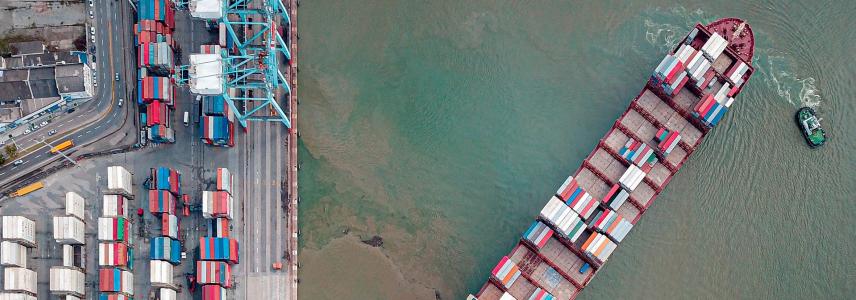Home decoration & home textiles supply chains are changing

The COVID-19 pandemic and the war in Ukraine have disrupted global supply chains. Because of this, European home decoration and home textiles (HDHT) importers are reviewing their current supply chains to ensure they have a stable supply. The search for alternative sources may result in threats and opportunities for suppliers in developing countries.
Challenges for global supply chains
In the last few years, the pandemic and other issues disrupted global shipping. Also, freight rates increased and delivery times became longer. Essential goods and services were scarce, so prices increased.
Challenges for global supply chains included:
- The trade war between the United States and China in 2018-2019;
- The COVID-19 pandemic in 2019-2020;
- The 6-day Suez Canal blockage in 2021;and
- The Russian invasion of Ukraine in 2022.
Transport Intelligence forecasts that freight rates will return to pre-pandemic prices in 2023. Still, European companies are looking for ways to adjust their international supply chains to ensure a stable supply, even if that leads to less efficiency.
Strengthening supply chains
Redesigning supply chainstakes time, and importers may only see effects in the long-term. European HDHT companies can try to strengthen their supply chains via:
- Second sourcing: Contracting more suppliers in stable countries. Second sourcing can also involve finding European producers to co-produce a part of the collection;
- Vertical integration. This involves increasing control over the supply chain. Companies can do this by either growing existing suppliers' capacity or by taking over suppliers;
- Pre-stocking: Storing stock, which the company can sell if there are new disruptions;
- Longer lifecycles: Extending existing product offers via recycling and repairing, sustainable materials or timeless design;
- Reshoring: Replacing offshore suppliers altogether.
Reshoring is a current topic in HDHT. But, in practice, there are some obstacles to the reshoring process. These include:
- Higher costs;
- Insufficient raw materials; and
- Longer lead times.
Also, the value for money of HDHT products in a reshoring process is often not as good. In June 2022, 26% of HDHT stakeholders planned to localise part of their production or sourcing, 22% had no plans to do so.
Changing supply chains may offer opportunities
Rising costs may put pressure on your business. And reshoring production to European suppliers may negatively affect you as a supplier from a developing country. But, changing supply chains can also offer you opportunities. European importers want to be less dependent on a single source. So, they are looking for alternative suppliers, especially in Asia. And, they are committed to building strong relationships.
To benefit from this shift, you should give importers reasons to choose you over European producers. These may include:
- Focus on added value, such as special techniques, materials, stories and sustainability;
- Raising your service levels to make working together easier and less costly.
For example, you could guarantee:
- Packing and transport services;
- Efficient local agents;
- Consolidated orders;
- Pre-stocking;
- Smaller minimum order quantities; or
- Other services, such as design adaptations and sample development.
Clear communication before, during, and after shipments helps to maintain a good relationship even during disruptions.
Read more
For more information, see our article on trends that offer opportunities or pose threats to the European home decoration and home textiles market.
Globally Cool B.V. wrote this news article for CBI in collaboration with GO! GoodOpportunity and Remco Kemper.
Stay informed
To stay informed on the latest developments in the HDHT sector, subscribe to our newsletter.